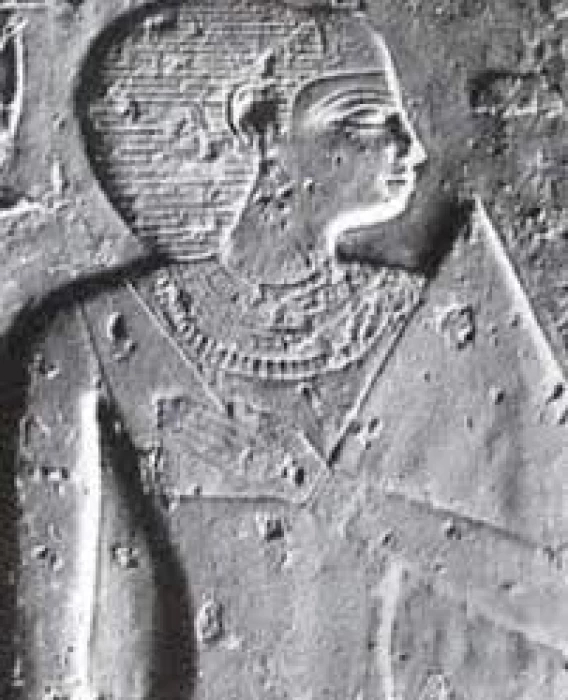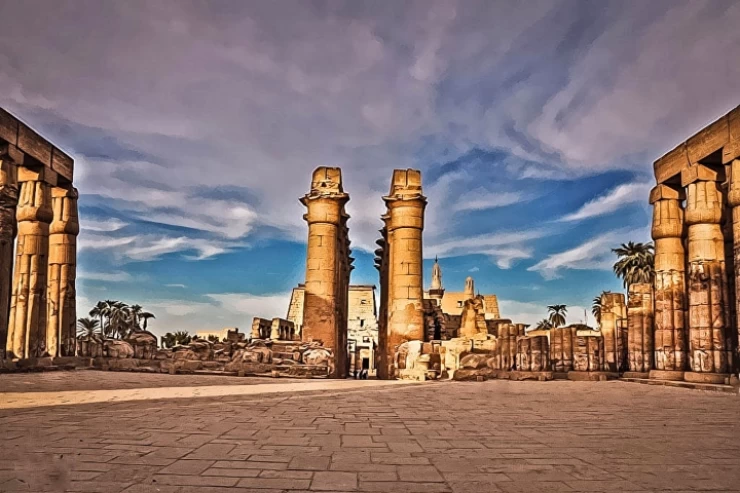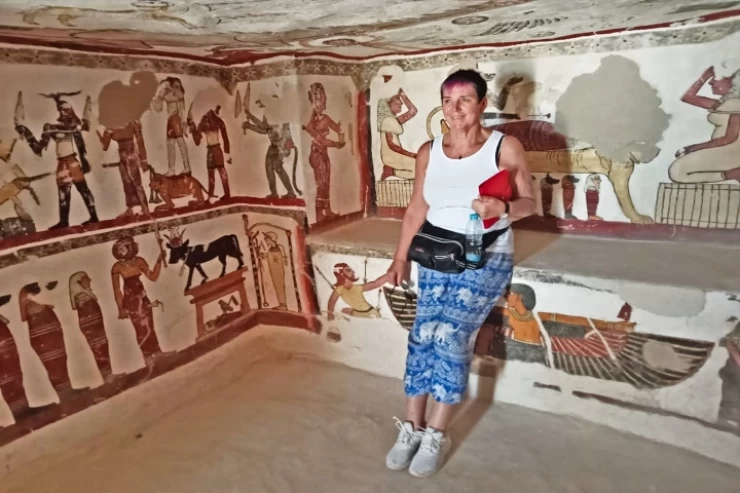
Facts about Queen khentkawes | Queens of Egypt
She probably reigned as the Queen of Upper and Lower Egypt, which is shown by some peculiarities of her burial. Although the relationship is not completely clear, the proximity of her tomb to the pyramid of King Menkaure raises speculation that she may be his daughter.
Her life
Khentkaus ascended the throne after the death of King Shepseskav and was considered the rightful heir to the throne. She was the first queen to write on the door of her pyramid the title "King of the sea and tribal faces, royal mother, daughter of God".
The latter interpretation suggests that she probably ruled Egypt at the end of the Fourth Dynasty. All Egyptologists who have studied her role in the history of the Old Kingdom agree that she was the wife of, or at least related to, Shepses Kaf.
Pyramid of Khent Kaos I Khent Kaus was buried in Giza. The Khentkaus pyramid complex includes her pyramid, a boat pit, a valley temple, and a pyramid city.
Pyramid complex
The khentkaus pyramid complex consists of a pyramid, a chapel, a solar boat, a pyramid city, a water reservoir and silos. The pyramid was originally described in the 19th century as an unfinished pyramid and was believed to belong to King Shepses Kav.
The chapel consists of a main hall and an inner Chapel, and a passage carved into the floor of the inner Chapel leads to the burial chamber. The floor of the chapel was covered with Tura limestone, while the walls were decorated with bas-reliefs; however, the scenes were significantly damaged. Fragments of inscriptions were found in the wreck during the excavation. The passage to the burial chamber and the room itself were lined with Red Granite. The corridor has a length of 5.6 meters and descends under the main structure of the pyramid. The burial chamber is large and very similar to the burial chamber of King Shepseskaf in Saqqara.
It is possible that the burial chamber contained an alabaster coffin; many pieces were found in the sand and debris that filled the room. The room also contained a small scarab made of brown limestone, the method of making of which seems to connect it with the Twelfth Dynasty. Some believe that the presence of scarabs indicates that the cemetery was reused for later burials.
A hole 30.25 meters long and 4.25 meters deep was dug in the rock. The bow and stern of the boat were high, and it seemed that the boat had a roof. The night boat may represent the god Ra, and if so, there may be an accompanying day boat that has not yet been found. The pyramid city is located directly to the east of the pyramid, and the city is planned along several streets that divide it into groups of houses. The city was built of unburned clay bricks, and the roofs were covered with a layer of yellow plaster.
Valley temple
A paved road connects the pyramid chapel with the valley temple of Khent Kaos, which is located near the valley temple of Mankaur, which indicates a close relationship between them. He discovered in front of the temple a small structure known as Khent Kaos ' "washing tent", the place where her body was taken to be cleansed before embalming. The debris that filled the room contained many fragments of stone utensils, pottery shards, and flint tools. The ground also has a limestone drain hole that extends underground for a distance of 7 to 20 meters and ends in a large rectangular Basin. The drain was covered with arched pieces of the same material, forming an almost round stone pipe. Although it is not the oldest known underground aqueduct in Egyptian funerary architecture, Selim Hassan considers it the oldest of its kind in construction.
The Valley temples of Khentkaus and Menkaure were partially built of clay bricks, then they were finished with white limestone and alabaster. The main entrance is located on the north side, which is a change from the usual situation where the entrance was usually located to the East. Entering the valley temple from the main entrance, the visitor walks along a " wide paved brick road that runs from the valley towards the West."The door was decorated with a pediment supported by two columns. Near the door, there was a statue of King Khafre (father of Menkaure) in ancient times.
















